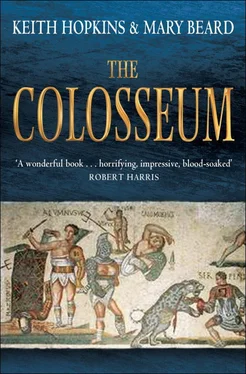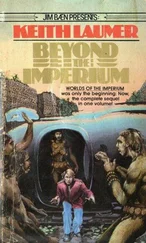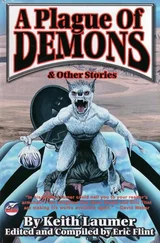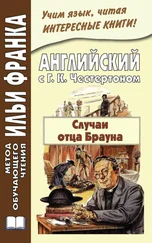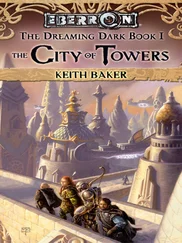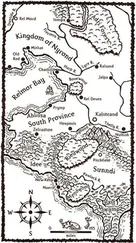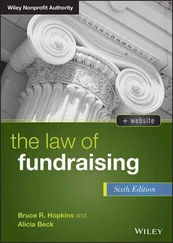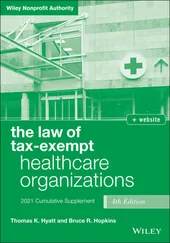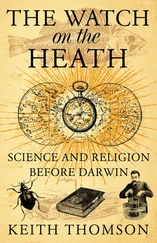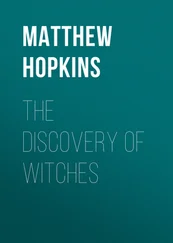Keith Hopkins - The Colosseum
Здесь есть возможность читать онлайн «Keith Hopkins - The Colosseum» весь текст электронной книги совершенно бесплатно (целиком полную версию без сокращений). В некоторых случаях можно слушать аудио, скачать через торрент в формате fb2 и присутствует краткое содержание. Город: London, Год выпуска: 2011, ISBN: 2011, Издательство: Profile Books, Жанр: История, на английском языке. Описание произведения, (предисловие) а так же отзывы посетителей доступны на портале библиотеки ЛибКат.
- Название:The Colosseum
- Автор:
- Издательство:Profile Books
- Жанр:
- Год:2011
- Город:London
- ISBN:9781846684708
- Рейтинг книги:3 / 5. Голосов: 1
-
Избранное:Добавить в избранное
- Отзывы:
-
Ваша оценка:
- 60
- 1
- 2
- 3
- 4
- 5
The Colosseum: краткое содержание, описание и аннотация
Предлагаем к чтению аннотацию, описание, краткое содержание или предисловие (зависит от того, что написал сам автор книги «The Colosseum»). Если вы не нашли необходимую информацию о книге — напишите в комментариях, мы постараемся отыскать её.
The Colosseum — читать онлайн бесплатно полную книгу (весь текст) целиком
Ниже представлен текст книги, разбитый по страницам. Система сохранения места последней прочитанной страницы, позволяет с удобством читать онлайн бесплатно книгу «The Colosseum», без необходимости каждый раз заново искать на чём Вы остановились. Поставьте закладку, и сможете в любой момент перейти на страницу, на которой закончили чтение.
Интервал:
Закладка:
The outside of the Colosseum also reveals clearly – and much more clearly than the inside – the enormous scale of the interventions and restorations since antiquity. You do not need to be a trained archaeologist to spot many of the sections of modern infill, often in obviously modern brickwork. Besides, several of those who left their mark in the fabric of the building also advertised the fact with prominent inscriptions on its exterior. Pope Benedict’s inscription ( pp. 164–5), for example, can be seen above the main east door and just beneath it the head of Christ, the symbol of the Order of St Salvator, which once owned part of the monument. At the west entrance, Pope Pius IX placed a replica of Benedict’s inscription, while adding a record of his own restoration in 1852.
It is also well worth exploring a little more widely beyond the monument itself. Towards the east are the five remaining bollards which once acted (we guess) as some kind of boundary marker or crowd control; immediately around them the Roman pavement surface has been preserved. Further in this direction, across the main road, lie the remains of one of the gladiatorial training camps, the Ludus Magnus ( p. 136). The distinctive outline of part of its practice arena can be seen from the Via S. Giovanni in Laterano (in an excavation visible from the left-hand side of the street as you walk away from the Colosseum); the rest of the complex is still buried under the nearby modern buildings.
At the west end, the most impressive monument has no direct connection with the Colosseum. It is the arch dedicated in AD 315 in honour of the emperor Constantine. Less striking, but more closely related to the story of the amphitheatre, are the foundations of two other monuments. Closest to the Via dei Fori Imperiali is the roughly square base on which the Colossus itself stood from the early second century AD. Between that and the arch of Constantine are the now scanty remains of what was once a famous landmark, put up in the late first century AD by the emperor Domitian – presumably partly to leave his own mark near the amphitheatre of his father and brother (Vespasian and Titus). This was a monumental fountain, known as the Meta Sudans. Its central feature was conical in shape, like the turning post used for races in the circus ( meta ); sudans means that it ‘sweated’ or ‘dripped’ (see illustration 16, p. 95).
THE VIEW FROM INSIDE
The plan of the Colosseum may be simple, but it is nevertheless very easy to lose your bearings once inside (especially as the methods used to channel the crowds mean that you emerge into the arena itself some distance around the circumference from the point at which you entered the outer corridors of the monument). The best advice is to keep your eye on where the main outer wall is preserved (that is obvious from most parts of the building) and to remember that that is the north!
Apart from special tours to the third level and hypogeum, visitors generally have access to two floors of the monument, the ground and first floors, and parts of both of these are regularly closed off to allow repair work. The first floor gives an excellent view of the whole structure (as well as offering wonderful vistas out over the surrounding area) and is the best place to start. Although this is less than half way up the original height of the monument, it is a steep climb up the stairs on a hot day. Most visitors prefer to use the lifts which have been neatly tucked in behind the nineteenth-century buttress at the east end. From the walkway around the edge of the arena at this level (which is just above the vault of the ‘third corridor’ on our cross-section, figure 3) you can look down into substructures beneath the level of the arena floor; and there is an excellent view of the reconstructed seating (which may help envisage the original appearance of the monument, even though it is in detail entirely wrong). Away from the arena’s edge, near the entrance to the lifts, is a small display of material found in the building – balustrades from where the stairways came out into the seating area, late-Roman inscriptions designating the occupants of particular sections of the elite seating and some vivid graffiti (illustration 17, p. 97) – plus some puzzling models of the machinery used to bring the animals up from the basements. Much of the space of the outer corridors on the north side is now usually given over to temporary exhibitions.
The ground floor is rather more confusing: parts of it (including sometimes even the section of wooden flooring built to replicate the original arena floor) are often closed to visitors; many of the vaults are used as deposits for quantities of stray masonry from the original structure. But there are also more details to look at here than on the first floor, especially near the north and south entrances. At the north, Mussolini’s cross (pp. 175–6) still stands at the arena’s edge and on the vault of one of the main passages leading into the building (immediately to the left of the central entranceway) is the best surviving piece of the stucco decoration that would once have adorned much of the structure. Moving towards the arena from the main south entrance (the modern day exit of the monument), which originally led to the imperial box, is the so-called ‘passageway of Commodus’ (p.134), visible on the right. Away from the arena itself, in the corridor between the south and west entrances, is the tantalising shape of a crucifix in the wall: nothing to do with Christians, but the setting for one of the fountains that serviced the building. In the original western entrance two inscriptions have been placed, celebrating one of the late-Roman repairs to the building.
AMENITIES
There are far fewer fountains and other services in the building now than there were in antiquity: no café and the queues for the (few) lavatories sometimes almost equal those at the ticket office. There are public toilets outside the east side of the building, but queues there can be off-putting too. (If buying your ticket from the nearby Palatine ticket office, you would do well to make use of the conveniences at that point). There is, however, an excellent book and souvenir shop on the first floor, and another smaller one on the ground. For refreshments, the modern ‘gladiators’ usually make for the stand-up coffee bar in the adjacent Metro station (it is a strangely picturesque sight to watch them mingling with the commuters, helmets on the counter). For anything more substantial, or for a seat, the restaurants and cafés nearest to the Colosseum are best avoided, over-priced and decidedly uninspiring in cuisine. Better fare is to be had as you walk down the Via S Giovanni in Laterano and the Via Santi Quattri Coronati to the east; or, a little further away to the west, up the Via della Madonna dei Monti off the Via dei Fori Imperiali, turning right at the Hotel Forum… whose famous roof terrace is reputed to be the setting for the conversation between Mrs Slade and Mrs Ansley in Edith Wharton’s ‘Roman Fever’ (p. 10).
Revised (2010) by Debbie WhittakerFURTHER READING
GENERAL AND INTRODUCTORY
The most comprehensive recent introduction to all aspects of the Colosseum is A. Gabucci (ed.), The Colosseum (Getty Museum, Los Angeles, 2001), though be warned that the English translation of the original Italian edition (Milan, 2000) is sometimes inaccurate and occasionally misleading. Also useful are P. Connolly, Colosseum: Rome’s Arena of Death (London, 2003) – especially good for its careful reconstruction drawings and its explanations of the basement areas; L. Abbondanza, The Valley of the Colosseum (Rome, 1997), the site-guide produced by the Italian archaeological service, but widely available; and P. Quennell, The Colosseum (New York, 1971), which is excellent on the medieval and later history of the building (though sadly out of print). Other important studies, available only in Italian, include M. L. Conforto et al., Anfiteatro Flavio: immagine, testimonianze, spettacoli (Rome, 1988), and R. Rea, Rota Colisei (Milan, 2002).
Читать дальшеИнтервал:
Закладка:
Похожие книги на «The Colosseum»
Представляем Вашему вниманию похожие книги на «The Colosseum» списком для выбора. Мы отобрали схожую по названию и смыслу литературу в надежде предоставить читателям больше вариантов отыскать новые, интересные, ещё непрочитанные произведения.
Обсуждение, отзывы о книге «The Colosseum» и просто собственные мнения читателей. Оставьте ваши комментарии, напишите, что Вы думаете о произведении, его смысле или главных героях. Укажите что конкретно понравилось, а что нет, и почему Вы так считаете.
